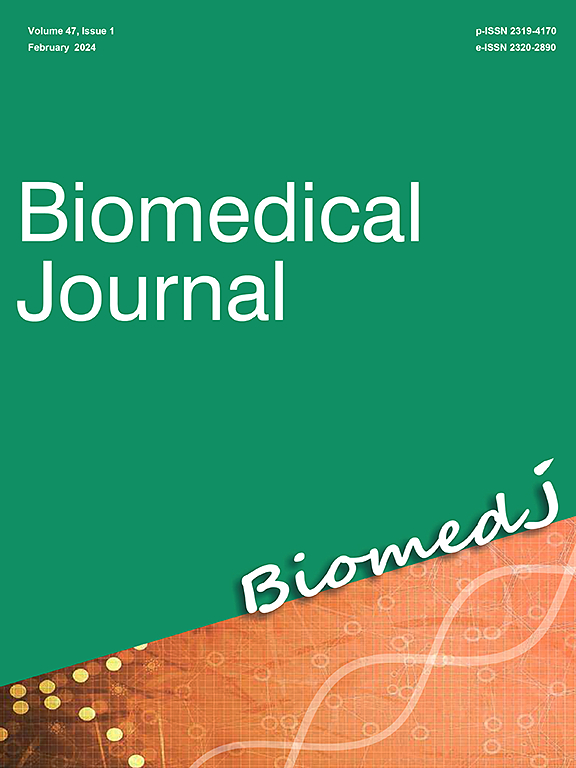时间生物伦理学:通过 7 天/24 小时动态血压监测观察到的生物钟交响乐与心血管健康。
IF 4.4
3区 医学
Q2 BIOCHEMISTRY & MOLECULAR BIOLOGY
引用次数: 0
摘要
背景:不同步生物节律的高发生率正成为公共健康的首要问题。我们评估了血压(BP)和心率(HR)中多频节律之间复杂多样的相互调制:我们对高知县一个日本农村小镇的 220 名居民(133 名女性)(23 至 74 岁)进行了日常生活条件下的 7 天/24 小时动态血压监测:生物钟的交响乐有助于保持昼夜节律系统的同步。(1) 与昼夜节律较短(11.37 小时)或较长(12.88 小时)的人相比,平均昼夜节律为 12.02 小时的人患血管变异性疾病的几率较低(结论:昼夜节律不规律的生活适应性有助于保持昼夜节律系统的同步:对日常生活中不规则时间安排的适应是在夜间无意识地发生的,可能是由大脑默认模式网络与生物钟系统(包括强化的约 12 小时时钟)协调启动的,是 "生物钟引导的核心整合系统"。本文章由计算机程序翻译,如有差异,请以英文原文为准。
Chronobioethics: Symphony of biological clocks observed by 7-day/24-h ambulatory blood pressure monitoring and cardiovascular health
Background
The high prevalence of desynchronized biological rhythms is becoming a primary public health concern. We assess complex and diverse inter-modulations among multi-frequency rhythms present in blood pressure (BP) and heart rate (HR).
Subjects
and Methods: We performed 7-day/24-h Ambulatory BP Monitoring in 220 (133 women) residents (23–74 years) of a rural Japanese town in Kochi Prefecture under everyday life conditions.
Results
A symphony of biological clocks contributes to the preservation of a synchronized circadian system. (1) Citizens with an average 12.02-h period had fewer vascular variability disorders than those with shorter (11.37-h) or longer (12.88-h) periods (p < 0.05), suggesting that the circasemidian rhythm is potentially important for human health. (2) An appropriate BP-HR coupling promoted healthier circadian profiles than a phase-advanced BP: lower 7-day nighttime SBP (106.8 vs. 112.9 mmHg, p = 0.0469), deeper nocturnal SBP dip (20.5% vs. 16.8%, p = 0.0101), and less frequent incidence of masked non-dipping (0.53 vs. 0.86, p = 0.0378), identifying the night as an important time window.
Conclusion
Adaptation to irregular schedules in everyday life occurs unconsciously at night, probably initiated from the brain default mode network, in coordination with the biological clock system, including a reinforced about 12-h clock, as “a biological clock-guided core integration system.”
求助全文
通过发布文献求助,成功后即可免费获取论文全文。
去求助
来源期刊

Biomedical Journal
Medicine-General Medicine
CiteScore
11.60
自引率
1.80%
发文量
128
审稿时长
42 days
期刊介绍:
Biomedical Journal publishes 6 peer-reviewed issues per year in all fields of clinical and biomedical sciences for an internationally diverse authorship. Unlike most open access journals, which are free to readers but not authors, Biomedical Journal does not charge for subscription, submission, processing or publication of manuscripts, nor for color reproduction of photographs.
Clinical studies, accounts of clinical trials, biomarker studies, and characterization of human pathogens are within the scope of the journal, as well as basic studies in model species such as Escherichia coli, Caenorhabditis elegans, Drosophila melanogaster, and Mus musculus revealing the function of molecules, cells, and tissues relevant for human health. However, articles on other species can be published if they contribute to our understanding of basic mechanisms of biology.
A highly-cited international editorial board assures timely publication of manuscripts. Reviews on recent progress in biomedical sciences are commissioned by the editors.
 求助内容:
求助内容: 应助结果提醒方式:
应助结果提醒方式:


